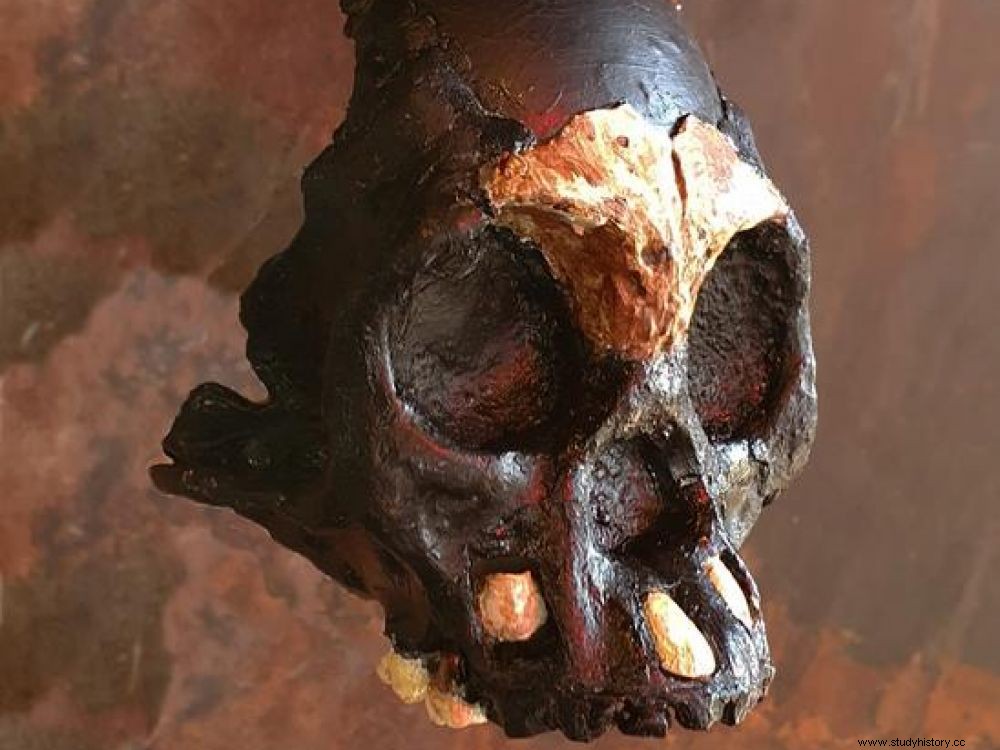Dated to around 250,000 years old, human remains discovered in South Africa belong to a child of the species "Homo naledi ".

A reconstruction of the skull of the first Homo naledi child whose remains were found in Rising Star Cave in Johannesburg. He was 4 to 6 years old.
This article is taken from Sciences et Avenir - La Recherche n°899, dated January 2022.
Twenty-eight fragments of a tiny skull and six small teeth have been discovered in an alcove in the underground Rising Star Caves, near Johannesburg, South Africa. Dated around 250,000 years ago, they belonged to a child Homo naledi , an intriguing species blending archaic and modern traits. These childish remains revive the hypothesis that these hominids buried their dead.
An intentionally deposited skull
According to the study published in PaleoAnthropology , the skull of the 4- to 6-year-old toddler could have been intentionally placed on a natural limestone shelf. "There are no other bones, yet more resistant than those of the head" , says Lee Berger, of the University of the Witwatersrand (South Africa). This excludes the hypothesis that the child crawled there before dying there; and the skull bears no wound marks showing that a predator would have dragged it there. It could therefore be the first child burial in the world, that of the child H. sapiens from Mtoto, Kenya, published in early 2021, being only 78,000 years old.
